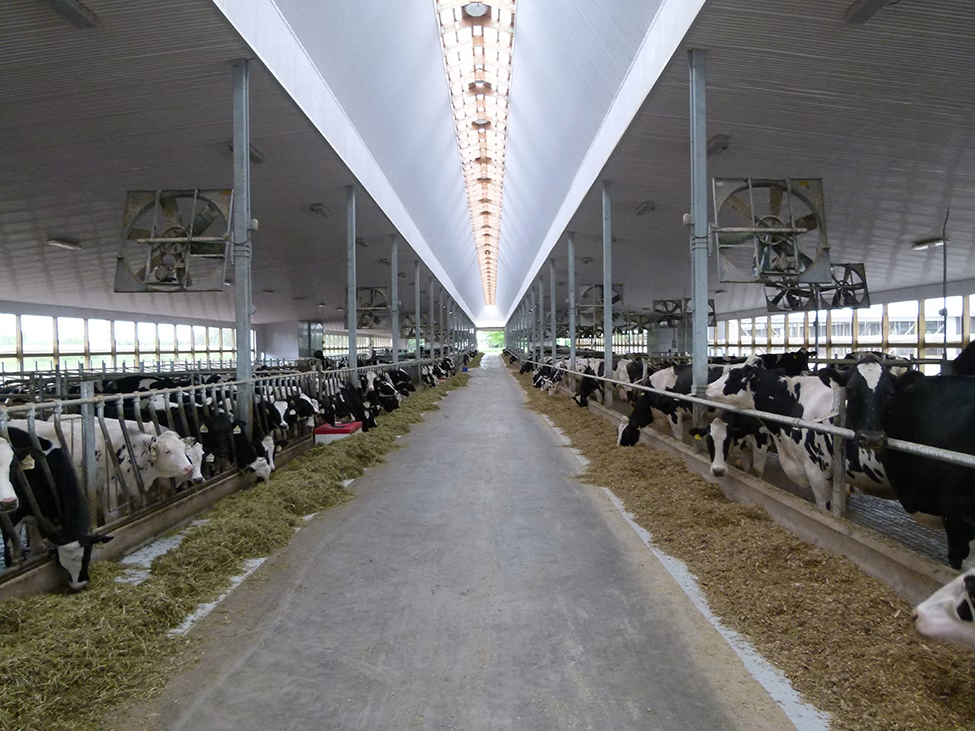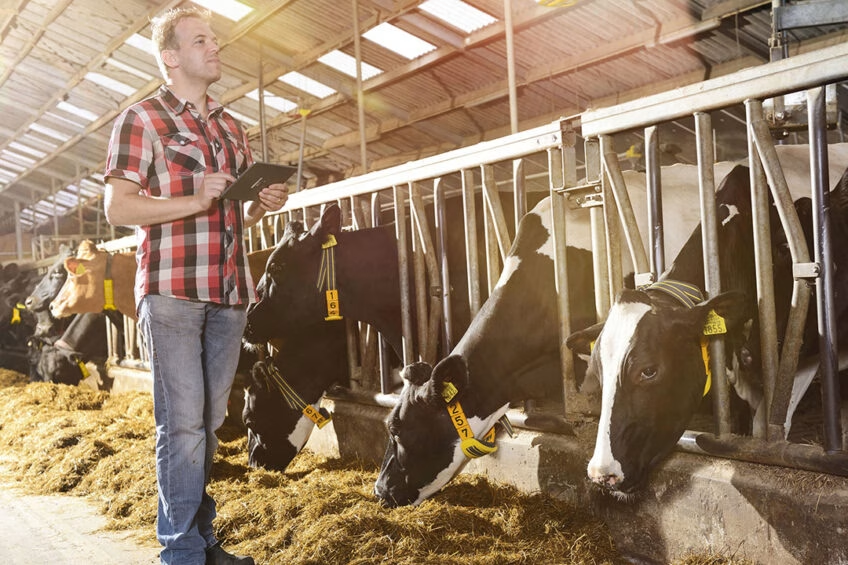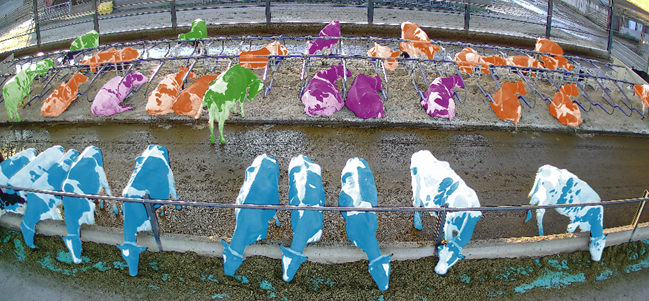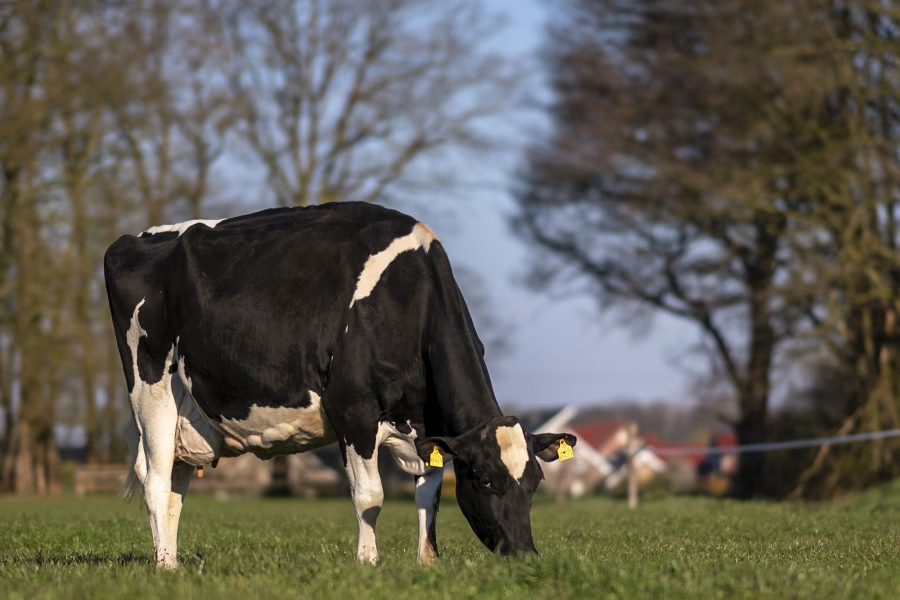Explore EuroTier 2024’s game-changing dairy innovations. Which one will shape your farm’s future? Find out now.
EuroTier 2024 is a beacon of innovation in the dynamic dairy farming landscape, showcasing breakthrough technologies that have the potential to revolutionize the industry. As Europe’s largest biennial agriculture show, it draws professionals worldwide to witness cutting-edge solutions. This year’s event highlighted AI-powered monitoring systems and innovative sensor technologies poised to transform dairy operations globally, underscoring the industry’s commitment to sustainability and efficiency.
EuroTier: Where Dairy Innovation Takes Center Stage
Held every two years, EuroTier is a prestigious platform showcasing the latest agricultural innovations, particularly in the dairy sector. At the heart of this event is the much-anticipated announcement of the EuroTier Innovation Awards. These awards, categorized into Gold and Silver, are meticulously crafted to recognize groundbreaking advancements that have substantially impacted dairy farming practices.
The Gold Award is reserved for innovations demonstrating a significant enhancement or a fundamentally new approach to product utility. Such innovations must meet the stringent criteria of offering a quantifiable increase in farm efficiency, animal welfare, environmental protection, or work facilitation. Essentially, these are the game-changers in the industry, introducing revolutionary methodologies or technologies that set new benchmarks.
Conversely, the Silver Award acknowledges incremental but valuable improvements to existing practices or technologies. These innovations typically enhance the utility or efficiency of current systems, making them indispensable in dairy farms’ daily operations. While they might not completely reinvent the wheel, Silver-winning innovations are recognized for their ability to provide measurable benefits and drive incremental progress.
The determination of these awards is no arbitrary feat. A panel comprising industry experts and seasoned practitioners undertakes a rigorous evaluation process. This assessment involves an in-depth analysis of the innovation’s utility, practical application, economic viability, and sustainability. By acknowledging radical transformations and subtle improvements, the EuroTier Innovation Awards are crucial in promoting forward-thinking and sustainability, instilling confidence in the dairy industry’s continuous development.
These awards bring international recognition to developers and set industry standards, stimulating competition and inspiring further progress. For dairy farmers and professionals, monitoring these innovations is vital, as they highlight the technologies steering the future of agriculture and provide a platform for industry professionals to contribute to the industry’s progress.
Revolutionizing Dairy Comfort and Precision: The Flex Air Stall and CalfGPT
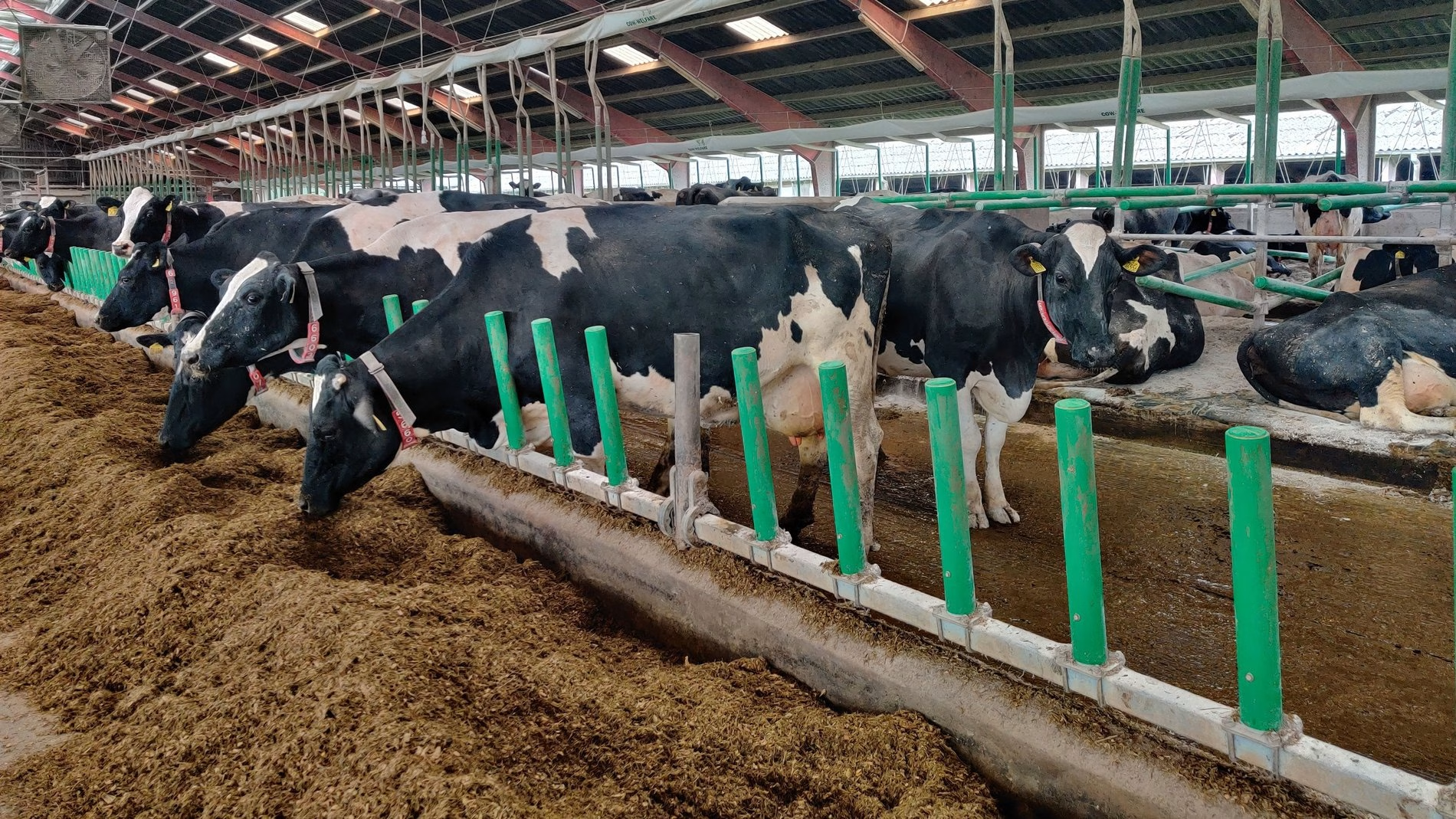
The Flex Air Stall by Cow-Welfare A/S is a game-changer in dairy cattle comfort. This technology boosts cow well-being by delivering a consistent stream of fresh air directly to the lying area within the stalls. Focusing on the cows’ immediate environment complements existing barn fan systems, ensuring optimal cooling and air circulation. For dairy farmers, enhancing cow comfort isn’t just about animal welfare; it translates into improved milk production and overall herd health. Cows that are comfortable and cool are less stressed and more productive, which, in turn, maximizes profitability.

Now, let’s delve into Forster-Technik’s CalfGPT. The integration of artificial intelligence within this system signifies a substantial leap in precision calf management. CalfGPT utilizes AI to analyze data from sensors and automated feeders, offering insights into the conditions of calf pens and individual calves. Farmers can employ voice-dictated observations with this technology, making data entry efficient and intuitive. This improves the accuracy of health monitoring and streamlines farm operations, allowing for faster response to potential health issues. Implementing AI in calf management is a strategic move toward enhanced farm efficiency, ensuring healthier calves, and promoting sustainable farming practices.
Silver Tier Triumphs: Transformative Tech Innovations in Dairy Farming
The Silver Tier of EuroTier awards showcases remarkable technological advancements poised to transform dairy farming. Betebe’s Straw Express stands out for its ingenious approach to improving bedding management. With its automated overhead system, this innovation efficiently dispenses straw and streamlines the process by autonomously handling baler twine removal. This reduces labor requirements and ensures consistent bedding distribution, a key component in maintaining herd health.
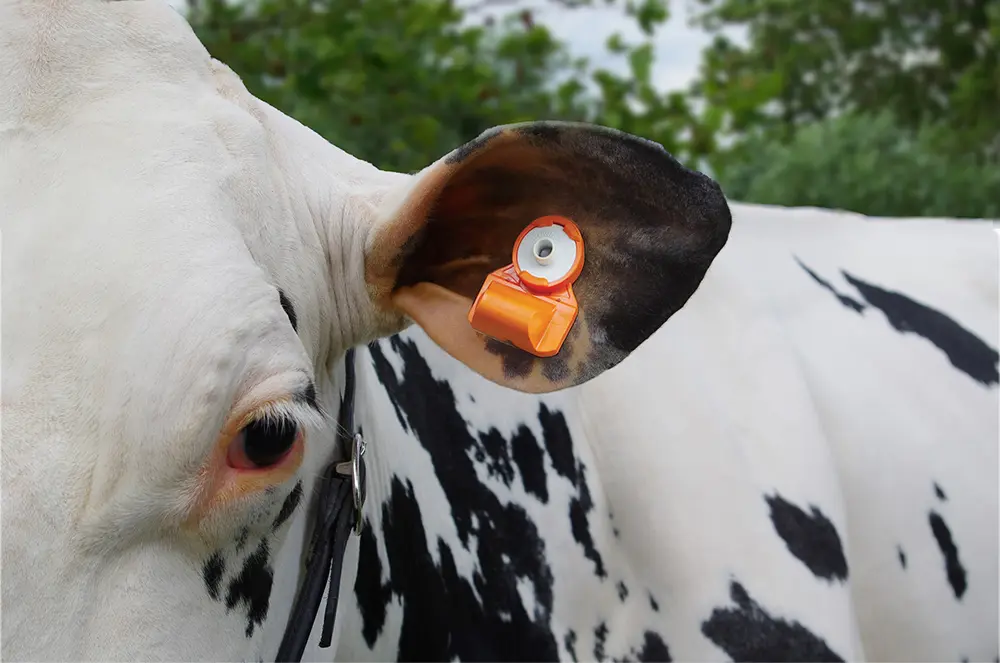
Another noteworthy silver winner, CowManager’s Ear Sensor Innovation, pushes the boundaries of calf monitoring into new realms of precision. Enhanced by machine learning, this technology evaluates real-time data to make highly accurate health predictions for individual calves. This sensor extends beyond monitoring by assessing temperature, movement, and behavioral patterns. It provides a proactive approach to livestock management, allowing farmers to address potential health issues before they escalate, thus ensuring optimal animal welfare and productivity.

Merck’s SenseHub Dairy Youngstock adds to the roster of cutting-edge technology. This sensor operates continuously to track the behavior of young cattle, monitoring activities such as suckling, feeding, and rumination. These metrics are crucial in identifying potential health anomalies before they become visible through clinical symptoms. By detecting deviations at an earlier stage, farmers can intervene swiftly, effectively minimizing potential health risks and enhancing the overall productivity and health of the herd.
Pioneering the Future: Silver Award Innovations Illuminate Dairy’s Path Forward
The latest silver winners in EuroTier’s prestigious innovation awards provide insights into the future of dairy farming by tackling persistent challenges with groundbreaking solutions.

HIKO’s Easyfill Feeding Bucket Lid is a practical tool for sustainability and efficiency. This innovation significantly reduces milk spillage during calf feeding, a common issue that leads to wastage and unsanitary conditions. With its unique aperture, the specially designed lid ensures rapid filling while maintaining the bucket’s cleanliness and protecting it from contaminants. By minimizing waste, this tool aids farmers in improving their profitability and operational cleanliness, promising a broader industry shift towards sustainable dairy practices.

SILOKING’s Heavy-Duty Magnet introduces a pivotal enhancement in feed safety and equipment maintenance. The innovative design effortlessly removes metallic foreign objects commonly gathered during feed mixing. This not only prevents potential hazards to livestock but also prolongs the lifespan of feed mixers by mitigating wear and tear. This advancement fosters a culture of safety and efficiency in dairy operations, providing a promising direction for future agricultural machinery design.
BETEBE’s Urease Inhibitor tackles environmental impact head-on by addressing ammonia emissions, a significant concern in cattle barns. Integrating with existing alley scrapers, this dosing and mixing unit efficiently dispenses urease inhibitors. This process curtails ammonia production, enhancing barn air quality and decreasing the farm’s environmental footprint. This innovation represents a significant step towards eco-friendly cattle farming practices, setting a precedent for sustainable developments in the industry.

Urban’s SipControl signifies a leap in animal welfare and predictive health monitoring. By measuring a calf’s sucking strength and swallowing patterns, this device detects potential health deviations early on. Such proactive monitoring facilitates timely interventions, improving calf health outcomes and productivity. This innovation underscores the growing importance of precision agriculture in enhancing livestock management, potentially transforming industry practices by prioritizing animal health.
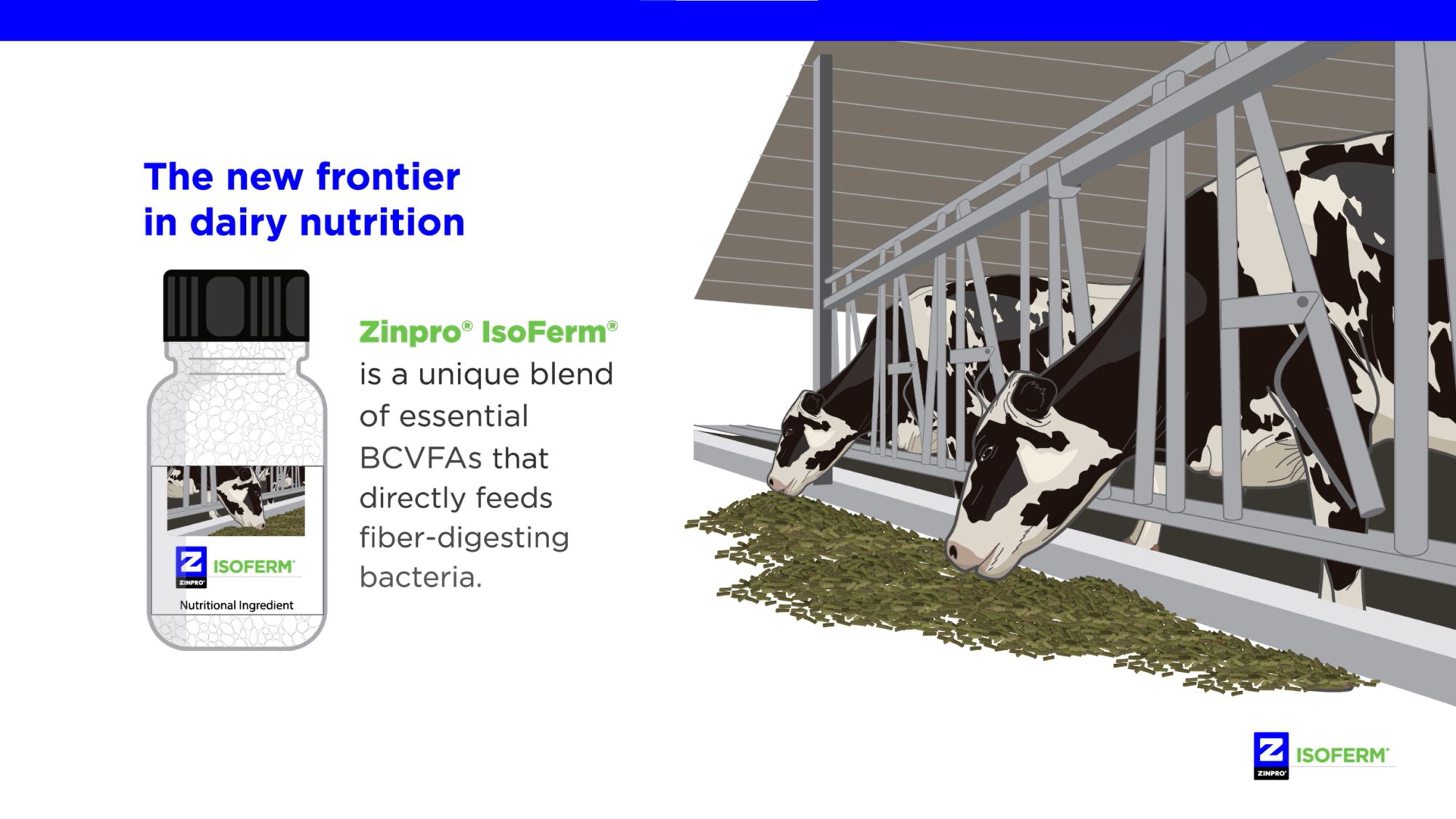
ZINPRO’s IsoFerm reinvents feed additive technology to optimize dairy cow digestion. This innovation accelerates fiber digestion efficiency by nurturing rumen bacteria, promising improved nutrient absorption and enhanced milk production. IsoFerm’s breakthrough presents an exciting opportunity for dairy farmers seeking optimum productivity through nutritional advancements. It highlights the industry’s potential for growth through scientific innovation and underscores feed technology’s crucial role in dairy success.
EcoFeed Steps Up as a Pioneer in Green Dairy Farming
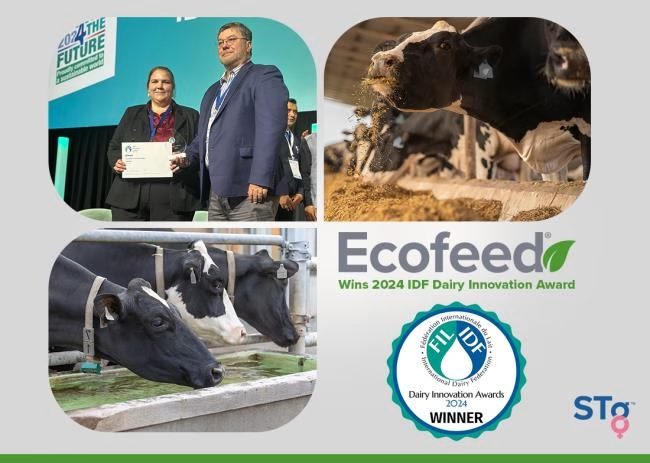
Innovation is the name of the game in dairy farming, and EcoFeed’s recent accolade only cements this trend. EcoFeed has taken the industry by storm, introducing a compelling narrative in sustainable dairy production. EcoFeed’s formula optimizes cattle nutrient absorption at its core, drastically minimizing methane output without compromising productivity. By enhancing feed efficiency, the product benefits the ecological landscape and presents a cost-effective solution for farmers struggling with rising feed costs.
This innovation could not have come at a better time. Given the agricultural sector’s climate challenges, EcoFeed offers a critical lifeline. Analysts predict stricter emissions regulations will soon make such innovations indispensable rather than optional. But what exactly sets EcoFeed apart? Its research-backed approach to altering dietary components works harmoniously with cattle’s natural digestive processes, keeping them healthier and more productive.
The narrative here is straightforward: EcoFeed is more than an innovation; it is a commitment to transforming dairy farming sustainably. As industry experts, we must ponder the implications of these advancements.
Revolutionizing the Dairy Frontier: Navigating Tradition and Innovation
In today’s rapidly evolving agricultural landscape, announcing these groundbreaking tech award winners at EuroTier is pivotal for dairy farmers worldwide. We are at the intersection of tradition and modernity, where technology is central to farming’s advancement. But what does this mean for the everyday dairy farmer? At their core, innovations like the Flex Air Stall and CalfGPT enhance cow welfare and streamline data-driven decision-making, presenting a significant opportunity for farms to boost productivity and animal health. Integrating these technological advances with broader policies, like sustainability mandates and welfare regulations, is crucial.
Moreover, these innovations resonate with market trends emphasizing sustainability and efficiency. The Straw Express and other silver-tier solutions exemplify how technology can reduce waste and optimize resource use. Adopting such advancements could offer dairy producers a competitive edge in an era where consumers are conscientious about environmental impact. The question remains: how will this affect long-term viability and profitability for small-scale versus large-scale operations? Will these technologies be accessible and affordable at every industry level?
The future of dairy farming will undoubtedly hinge on these technologies. It’s about adopting and integrating the latest gadgets into existing practices to foster resilience and adaptability. How do you foresee incorporating these innovations into your operations as a dairy farmer? As we contemplate these questions, let’s engage in dialogue that propels the industry forward, ensuring we adapt to and thrive in the evolving agricultural landscape.
The Bottom Line
In conclusion, EuroTier’s latest tech award winners highlight groundbreaking innovations that promise to revolutionize the dairy farming landscape. These technologies set new efficiency and animal welfare standards, from enhancing cow comfort with Cow-Welfare A/S’ Flex Air Stall to leveraging AI for precise calf monitoring with Forster-Technik’s CalfGPT. The silver winners — armed with solutions like CowManager’s calf health monitoring and Merck’s SenseHub Dairy Youngstock sensor — underscore the evolution towards more intelligent, data-driven farming. Each of these innovations holds the potential to reshape operational practices and elevate industry standards, urging producers to rethink traditional methods.
As dairy professionals, it’s crucial to ponder how these advancements can be integrated into your workflows. These technologies are not just about convenience — fundamentally transforming how you understand and interact with your herd. The question is: are you ready to embrace this change? Please share your thoughts or experiences with these new technologies in the comments below, and let’s spark a conversation about the future of dairy farming.
Key takeaways:
- EuroTier’s tech awards highlight groundbreaking innovations driving the future of dairy farming.
- Gold and silver award tiers recognize impactful technology solutions across various aspects of dairy operations.
- Innovations like Cow-Welfare’s Flex Air Stall and Forster-Technik’s CalfGPT focus on improving cow comfort and leveraging AI for precision management.
- Silver winners showcase diverse enhancements in feed management, animal health monitoring, and efficient resource utilization.
- Technologies presented a balance between traditional dairy farming methods and cutting-edge digitalization, addressing animal welfare and environmental concerns.
- The event serves as a platform for discussing technology integration to advance dairy farming practices sustainably.
Summary:
At EuroTier 2024, Europe’s leading agricultural expo, the announcement of tech award winners again highlighted breakthrough innovations set to revolutionize the dairy industry. Recognized for their contributions to efficiency and animal welfare, the gold and silver tier awardees focused on enhancing comfort, precision, and environmental sustainability in dairy farming. As one participant noted, “Innovation is the calling card of the future,” underscoring the importance of technological progress in agriculture. The Gold Award honors significant advancements or novel approaches that substantially boost farm efficiency and animal welfare. At the same time, the Silver Awards celebrate noteworthy improvements to existing technologies, enhancing their utility and efficiency. These recognitions reaffirm EuroTier’s role in promoting forward-thinking and sustainable practices essential for modern dairy operations.
Learn more:
- Embracing the Future: The Latest Innovations in Dairy Technology and their Impact on the Industry
- How Apple’s High Standards Are Transforming Dairy Tech: Achieving Efficiency and Sustainability
- Harnessing Technology, Tools, and Innovative Practices to Empower Dairy Farmers
 Join the Revolution!
Join the Revolution!
Bullvine Daily is your essential e-zine for staying ahead in the dairy industry. With over 30,000 subscribers, we bring you the week’s top news, helping you manage tasks efficiently. Stay informed about milk production, tech adoption, and more, so you can concentrate on your dairy operations.







 Join the Revolution!
Join the Revolution!